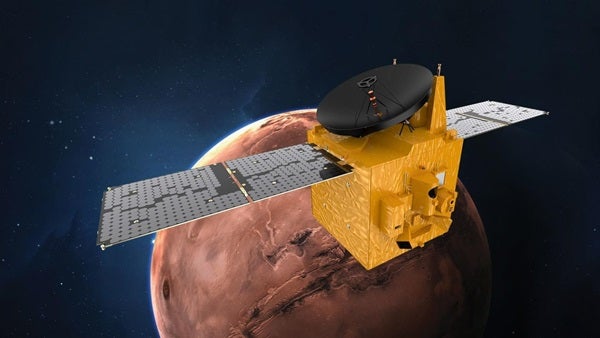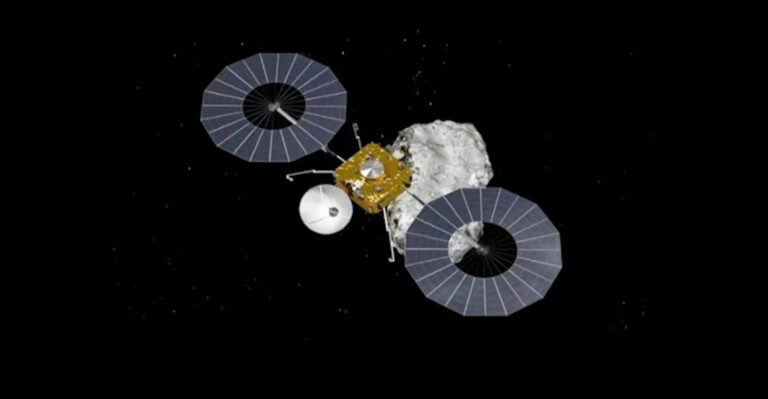The UAE Space Agency will broadcast the event starting at 9 A.M. EST (February 9) on their website. You can watch it directly below once the stream is live.
Surveying the skies
The Hope probe (al-Amal in Arabic) is an orbiter that not only represents the UAE’s first foray into the solar system, but also a new era of cutting-edge Mars science.
Hope will diligently observe the martian atmosphere, helping scientists better understand interactions between its upper and lower portions. The orbiter also will track characteristics such as temperature, humidity, and dust levels for an entire martian year (687 Earth days, or a little less than two Earth years), regularly painting a global picture of atmospheric conditions every two weeks. This comprehensive approach will allow researchers to track how molecules escape Mars’ atmosphere into space — a process which, over billions of years, has transformed Mars from a wet, warm environment into a cold, dry, and dusty planet.
The UAE has announced it will freely share the Hope mission data with hundreds of institutions around the world, cementing their place as part of the larger science community.
Interplanetary success story
Hope launched from Japan’s Tanegashima Island aboard a Mitsubishi MH-IIA rocket on July 19, 2020. The successful liftoff marked the end of a six-year effort by the UAE to develop, construct, and launch its first homegrown interplanetary mission.
To accomplish such a lofty and complex goal, the Mohammed bin Rashid Space Centre sought collaborations with other research institutions to bring interplanetary experience to the table, including the University of Colorado Boulder, Arizona State University, Northern Arizona University, and the University of California, Berkeley.
Concluding its seven-month, 307-million-mile journey (493.5 million km), the orbiter will begin its Mars Orbit Insertion phase tomorrow morning (February 9). Hope will first fire its thrusters to slow down, allowing Mars’ gravity to capture the 2,970-pound (1,350 kg) craft in orbit. According to the UAE Space Agency, the slowdown will burn almost half of Hope’s available fuel supply to reduce its speed from more than 75,000 mph (121,000 km/h) to 11,000 mph (17,700 km/h) over the span of just 30 minutes. If the maneuver is successful, Hope will end up in an elliptical orbit with a period of 40 hours, swinging as close as 620 miles (1,000 km) and as far as 30,700 miles (49,380 km) from Mars’ surface.
The mission team will then begin a second test of Hope’s systems and instruments (the first occurred after the spacecraft’s launch) before the science mission can begin. Engineers will also further tweak Hope’s orbit into its final optimal science orbit: an elliptical orbit lasting 55 hours that takes the probe between 12,400 and 26,700 miles (20,000 to 43,000 km) of the surface.
On February 1, UAE Vice President and Prime Minister Sheikh Mohammed bin Rashid Al Maktoum said in a tweet that although the probe has a 50 percent chance of successfully entering Mars orbit, the mission has already accomplished 90 percent of its goals — lofting the UAE onto the global stage of interplanetary research and inspiring future generations of Emirati scientists — regardless of the final outcome.
Omran Sharaf, the Emirates Mars Mission lead, echoed that sentiment in a recent press release: “The mission has truly transformed The Emirates’ capability in space systems engineering, science, and research and had enormous positive impacts on our science community in general.”
Ultimately, whether or not the mission’s Mars Orbit Insert is successful, the UAE’s future as part of the global scientific community looks hopeful.










